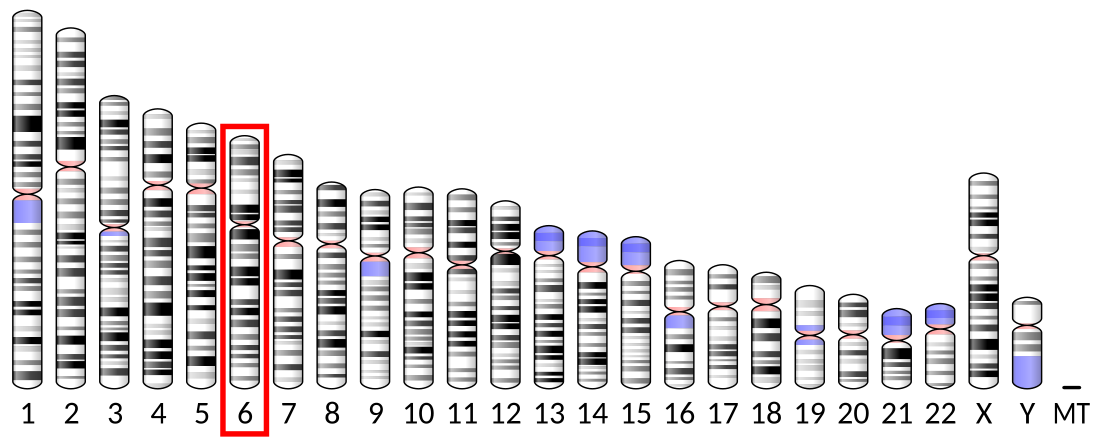Top Qs
Timeline
Chat
Perspective
Mitochondrial uncoupling protein 4
Protein-coding gene in the species Homo sapiens From Wikipedia, the free encyclopedia
Remove ads
Mitochondrial uncoupling protein 4 (UCP4) is a protein that in humans is encoded by the SLC25A27 gene.[5][6][7]
Remove ads
Tissue distribution
SLC25A27 transcripts are detected exclusively in brain tissue.[7] Expression of UCP4 is developmentally regulated and influenced by environmental conditions. This brain-specific expression pattern distinguishes UCP4 from other uncoupling proteins, which are found in a wider range of tissues.
Structure
UCP4 shares the typical structural features of the MACP family, including three homologous protein domains that span the inner mitochondrial membrane. However, reconstituted UCP4 has been observed to adopt a conformation distinct from other uncoupling proteins, suggesting potential functional or regulatory differences.[8]
Function
Mitochondrial uncoupling proteins (UCPs) are part of the mitochondrial anion carrier protein (MACP) family. They mediate proton leak across the inner mitochondrial membrane, uncoupling oxidative phosphorylation from ATP synthesis and dissipating energy as heat. This process lowers the mitochondrial membrane potential and contributes to thermogenesis and regulation of reactive oxygen species. UCPs facilitate the transport of anions from the mitochondrial matrix to the intermembrane space, and the reverse flow of protons. Their activity is modulated by various ligands; for example, UCP4 is activated by fatty acids and inhibited by purine nucleotides.[9]
Homologs in Drosophila
In Drosophila melanogaster, four UCP homologs—DmUCP4A, DmUCP4B, DmUCP4C, and DmUCP5—have been identified based on sequence similarity to mammalian UCP4 and UCP5. Among these, DmUCP4A has been shown to protect against mitochondrial dysfunction in models of Parkinson's disease by increasing mitochondrial membrane potential and enhancing ATP synthesis. DmUCP4A functions as an aspartate transporter, catalyzing the unidirectional movement of aspartate from mitochondria to the cytosol. This transport is saturable, inhibited by mercurial compounds and other mitochondrial carrier inhibitors, and is not coupled to proton exchange. In Drosophila, cytosolic aspartate is essential for protein and nucleotide biosynthesis, as well as the production of β-alanine and N-acetylaspartate—metabolites important for neuronal function.[10]
Remove ads
See also
References
Further reading
Wikiwand - on
Seamless Wikipedia browsing. On steroids.
Remove ads




